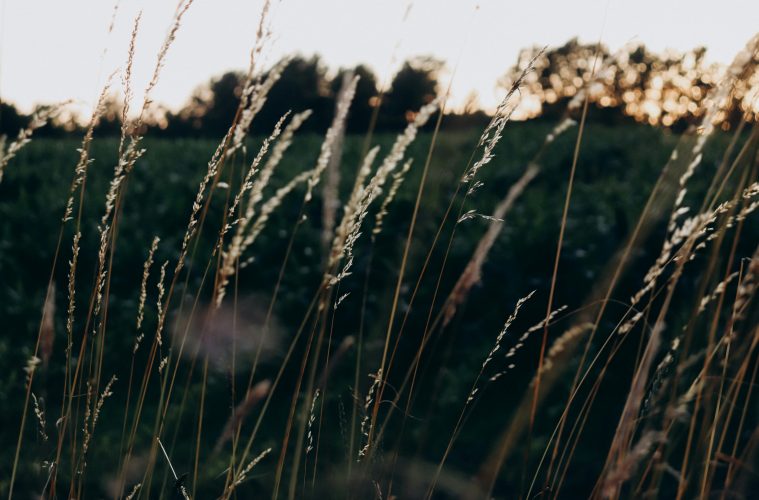Ornamental grasses are a clever choice for hot, dry landscapes. They bring texture, movement, and year-round structure while needing very little water once established. Many indigenous varieties are also excellent for wildlife, offering food and shelter while thriving in poor soils.
Here are some of the most reliable ornamental grasses that will carry your garden through the driest summers.
1. Weeping lovegrass (Eragrostis curvula)
A graceful, tufted grass with fine, arching leaves and airy seed heads. Its fountain-like form softens borders, while the golden plumes catch the light beautifully in late summer. It’s hardy, adaptable, and excellent for erosion control.
2. Spear grass (Heteropogon contortus)
This striking bunch grass develops twisted, bronze-purple seed heads that shimmer in the sun. Its upright form adds structure to planting schemes, and its resilience makes it a reliable choice for tough conditions.
3. Common thatching grass (Hyparrhenia hirta)
Tall and upright, with fine-textured foliage that turns golden as the season progresses. Traditionally used for thatching, it’s now appreciated in ornamental settings for its height and dramatic seed plumes.
4. Red grass (Themeda triandra)
Famous for its coppery-red tones, this is one of the most beautiful indigenous grasses. It shifts colour with the seasons, from green in summer to deep russet in autumn, adding warmth and texture to the garden.
5. Wire grass (Elionurus muticus)
A tough, wiry grass that thrives in rocky or sandy soils. It forms dense tufts with silvery inflorescences that sway elegantly in the breeze, making it both resilient and ornamental.
6. Tassel grass (Harpochloa falx)
This clump-forming grass produces distinctive, drooping flower spikes that resemble tassels. It’s eye-catching in both borders and containers, and its seed heads bring texture long after the flowering season.
7. Blue tussock grass (Eragrostis chloromelas)
Compact and tidy, this grass is valued for its fine blue-green foliage and neat, mounding shape. Its subtle colouring contrasts beautifully with bold perennials or succulents.
8. River grass (Arundinella nepalensis)
A versatile, medium-height grass with soft, arching leaves and delicate seed heads. It tolerates a range of conditions and adds a natural, meadow-like feel to planting schemes.
9. Thatching reed (Hyparrhenia tamba)
Tall and statuesque, this reed-like grass forms large clumps topped with feathery seed heads. It works well at the back of borders or as a dramatic screen, adding vertical interest and movement.
Why ornamental grasses work so well
- Drought-ready: once established, they thrive with little water.
- Low-maintenance: most need no more than a yearly cutback.
- Wildlife-friendly: seeds and shelter attract birds and insects.
- Seasonal beauty: shifting tones and textures create interest all year.
By planting indigenous ornamental grasses, you can create a garden that’s water-wise, low-maintenance, and full of movement and character. Whether you love bold, architectural clumps or delicate, feathery textures, there’s a grass to suit every space.
ALSO SEE:
Featured Image: Pexels

